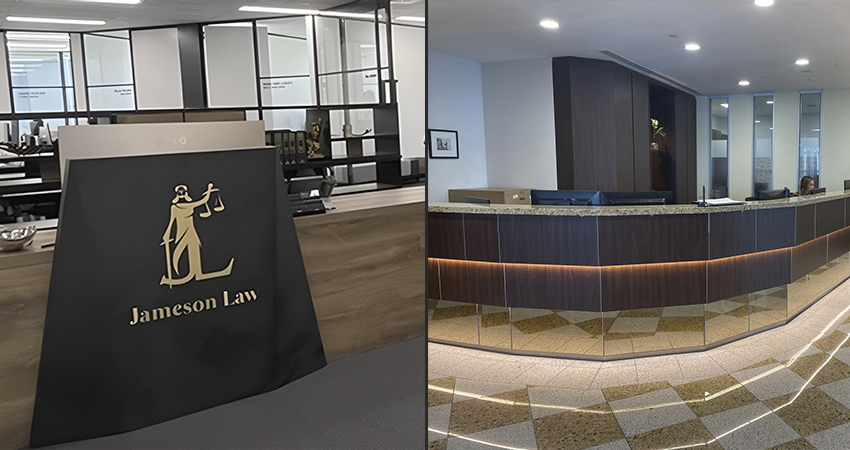Continuing Behaviour after a Move on Direction
WE GET IT
WE'RE IN IT TO WIN IT
Book your consultation
- This form submission is encrypted and secured to ensure your information remains confidential.
This form submission is encrypted and secured to ensure your information remains confidential.
Our criminal law knowledge and experience in move on directions is your best defence.
Award Winning Criminal Law Experts
We have won several criminal defence and client service excellence awards every year up to and including 2025.
Proven Track Record
60+ Years of combined experience defending criminal matters means a successful outcome is on the table.
5 Star Reviews Everywhere
We’re in it to win it and we fight hard for our clients. That’s why anywhere you look you will find 5 star reviews.
Easy Finance Options
Get urgent premium legal representation now and pay later with affordable fortnightly or monthly payments.
Award Winning Criminal Law Experts
We have won several criminal defence and client service excellence awards every year up to and including 2025.
Proven Track
Record
60+ Years of combined experience defending criminal matters means a successful outcome is on the table.
5 Star Reviews
Everywhere
We’re in it to win it and we fight hard for our clients. That’s why anywhere you look you will find only 5 star reviews.
Easy Finance
Options
Get urgent premium legal representation now and pay later with affordable fortnightly or monthly payments.
Move on direction in NSW
A move on direction, have you ever received one? Have you ever been an intoxicated person in a public place or caused a danger to public safety? In Australia, police officers are able to give “move on directions” when they witness an individual behaving as a public nuisance. These directions serve as a warning that next time charges may be laid if the same type of behaviour continues.
Case Study
David lives in Sydney New South Wales. David loves to drink and party every Friday night with his friends and enjoys bar crawling across NSW. One night, David and his friends are out at a club drinking when they run into a group of pretty girls.
David has already had quite a few drinks and his friends are encouraging him to go and speak to one of the girls. David decides to but his charm is not well received in his drunken state. David starts yelling and swearing as the girls walk away and he creates a scene in the middle of the street.
The police attend and try to calm him down. They give him a move on direction and tell him to go home and sleep off his intoxication. The direction is enough to sober David up a little and he quietly apologises and heads home to bed.
What Type of Conduct Might Warrant A Move on Direction?
It is usual that for a move on direction to be given, an individual’s conduct must fall within the range of public nuisance but, where there has not specifically been an injured party. Basically, there has yet to be a crime committed however it is deemed likely that one will be if the conduct or behaviour is continued. Usually, this is referred to as disorderly conduct or disorderly behaviour.What Legislation Do I Need To Consider?
There are two different types of legislation to consider if you have received a “move on direction”. The Law Enforcement (Powers and Responsibilities) Act 2002, specifies the police powers that exist in these types of situations. Simply put, police are able to give a move on direction if there are reasonable grounds to do so. Additionally, the Summary Offences Act 1988 applies as it encompasses move-on directions and all that they entail. The legislation covers the minimum and maximum penalties that a person can be given for the offence. Subsection 9 of the Act specifies that in order for a move on direction to result in an offence, then the direction must be given in the 6 hours prior to it being given the second time and if it has then the person is deemed to have committed an offence. Finally, you can consult the Law Enforcement (Power’s and Responsibilities) Act 2002 (LEPRA), for further information on Move on Directions.
Case Study
Penelope has been drinking at a club with friends when she decides to leave and go home. Penelope is walking home when she sees her ex-boyfriends car parked outside one of her close friends houses. She sees the two through the window kissing. Penelope feels hurt and betrayed by their actions and runs over to his car. She kicks the side of the door a few times but it barely leaves a scratch because in her drunken state she doesn’t have a lot of force behind her foot.
As Penelope is kicking the car, a police officer drives past and asks her what she is doing. Penelope is crying and she tells the officer’s what happened. The officer inspects the car and can see that Penelope has not damaged the vehicle. He gives her a move on direction and tells her to go home.
Penelope goes home but she is too angry to go to sleep. She gets out of bed and drinks a few shots of Vodka to try and take the edge off. She keeps drinking until she feels numb. She then walks back to her friends house and starts yelling at her house. She is crying, swearing and causing a scene and one of the neighbors calls the police. Penelope is charged with disorderly conduct because she has been given a move on direction already in the past 6 hours.
What Type of Offence Stems From A Move On Direction?
In most circumstances, any offence that stems from a move on direction will be a summary offence because it will be classed as drunk or disorderly conduct. In some circumstances, the behaviour of an individual may reach that of an indictable offence if a violent or serious crimes has been committed as a result of disorderly conduct. Either way the conduct is considered to fall under criminal law and will require legal advice. Particularly, the relevant conduct a police officer is searching for when making a move on direction is drunk and disorderly conduct or anything that classifies as a public nuisance.Will I Need To Seek Legal Advice?
If you are charged with an offence following a move on direction then you will need to seek legal advice. Not only is criminal law a difficult area of law to navigate but it is important that you make sure you know what the repercussions may be. A criminal lawyer will be able to tell you whether you have a reasonable excuse defence to rely on or whether there is some other form of defence you can use such as unlawful arrest or excessive police force for example. There are circumstances where police do not execute their duties correctly and it results in a charge being dismissed. This is the exception though, not the rule.
Case Study
Peter is out drinking with a group of people from his work one Friday night when he see’s his friend Stacey staggering along the street. She seems unsteady on her feet and her eyes are glassy. Peter knows that Stacey is having a hard time because she is currently fighting a large industrial dispute case at her firm. There are millions of dollars involved and Stacey has been working long hours.
Peter approaches Stacey to see if she is alright. Stacey starts yelling at Peter and calls him names. She accuses Peter of not wanting to be friends with her because he has not reached out lately. As Stacey is yelling, a police officer comes past and tells Stacey to calm down because she is disrupting the families who are trying to eat dinner at the restaurant next to her. There are children sitting at tables out the front and listening to her yelling and swearing at Peter. The officer tells Stacey to leave the area and not return until at least 8am the next morning.
Stacey staggers away and Peter continues on with his evening. A few hours later he see’s Stacey try to re-enter the bar across the road from where he is. The bouncer refuses her entry to the bar but Stacey becomes upset and starts yelling at him. The NSW police are called and arrest Stacey for disorderly conduct.
They tell Stacey that she has breached the move on direction and that they have no choice but to charge her. Breaching a move on direction is a serious matter because it means that you have already been given one chance to calm down and leave the area without being charged.

Can I Be Charged For An Offence If It Is Seen On Social Media?
In this day and age, almost every action you can make will end up on social media. It is naive to assume that any disorderly conduct you commit won’t. People record everything nowadays so it is important to understand that if you have committed any offences during your drunk or disorderly conduct then it is likely that they have been recorded. If this is the case and a recording is provided to police, then charges can be laid from that recording or video provided that it can be established it was you who committed the offence.What Is A Person of Reasonable Firmness?
A person of reasonable firmness is a term used to describe a regular person who in certain circumstances may feel fear when presented with certain conduct. The Summary Offences Act uses the term to describe when conduct can be deemed drunk or disorderly and determines that if a person of reasonable firmness would be afraid then the conduct is disproportionate. This means that the police move is either a move on direction is required or a charge is required in response to the person’s behaviour.Speak to a lawyer today
If you require legal advice in any criminal law matter, our expert criminal lawyers specialise in a range of criminal offences including those discussed in this article. Contact us for a free, honest consultation about how we can assist in your matter today.
Disclaimer
The above is general legal information and should not be considered legal advice. You should speak with one of our migration lawyers for legal advice tailored to your specific legal matter. The courts and tribunals deal with matters on a case by case basis. It should also be noted that there may be delays due to COVID-19. Our criminal lawyers are based in Sydney, we cannot assist with legal advice in a range of jurisdictions whether in Melbourne, Brisbane, Adelaide or Perth.
Speak to an Expert Lawyer today

WE'RE IN IT TO WIN IT
Book your consultation
- This form submission is encrypted and secured to ensure your information remains confidential.
This form submission is encrypted and secured to ensure your information remains confidential.
What our Clients Say
Related Criminal Law News and Resources
Charged with Domestic Violence – ‘Assault Occasioning Actual Bodily Harm’ Criminal Defence Lawyer finds serious issues in Prosecution’s case Nora
Our client a 49-year-old man with a history of ‘assault police’ and ‘destroy/damage property’. In December 2023, he was served
In a bizarre yet surprisingly effective scheme, a 54-year-old Wollongong man stole hundreds of dollars worth of groceries using a
In a sweeping operation across multiple states, Australian Federal Police (AFP) have arrested the alleged mastermind behind the encrypted messaging
The Facts behind the Common Assault Charge Our client, a middle-aged bank worker residing with her partner whom she had
In October 2023, we appeared in Campbelltown District Court on behalf of a 32-year-old man charged with two counts of
Partner SC309 and permanent Partner SC100 simultaneously after claims for domestic violence Congratulations to our client who was granted both
Our solicitor, Mr. Wissam Philopos, represented a young man at the Downing Centre Local Court in relation to a serious
Our solicitor, Mr Wissam Philopos, represented a middle-aged woman at Mt Druitt Local Court in mid-March 2023 in relation to
Our solicitor, Mr Wissam Philopos represented a man at Parramatta District Court in relation to a District Court Appeal. The
Our Solicitor, Nicholas Hardy, represented a man at Parramatta Local Court in relation to the following charge: Common assault (domestic
We had the opportunity to assist an elderly aboriginal person who had extensive mental and cognitive impairments, coupled with a
FAQs
Frequently Asked Questions.
The legislation specifies that the maximum penalty units you can receive for an offence following a move on direction is 15 units.
If you receive a move on direction you are required to vacate the area for 6 hours.
A disclaimer is a statement you make that denies responsibility for an action or offence.
Yes, there are services available through the Aboriginal Legal Center that you can access. These services receive government funding so the services are free or subsidised.
WE'RE IN IT TO WIN IT
Book your consultation
- This form submission is encrypted and secured to ensure your information remains confidential.
This form submission is encrypted and secured to ensure your information remains confidential.
Our SYDNEY Offices
Parramatta CBD - Head Office
- (02) 8806 0866
- 0488 817 882
- 02 9052 0840
- info@jamesonlaw.com.au
- Suite 301, 67-69 Philip St Parramatta NSW 2150
Sydney CBD - Practice Office
- 02-8806-0866
- 0488 817 882
- 02 9052 0840
- info@jamesonlaw.com.au
- Tower One Barangaroo International Towers Level 35, 100 Barangaroo Ave Sydney NSW 2000
Blacktown CBD - Practice Office
- (02) 8806 0866
- 0488 817 882
- 02 9052 0840
- info@jamesonlaw.com.au
-
Level 3 81 Flushcombe Road, Blacktown NSW 2148
(By Appointment Only)

Liverpool CBD - Practice Office
- (02) 8806 0866
- 0488 817 882
- 02 9052 0840
- info@jamesonlaw.com.au
-
Level 2, 215-219 George Street, Liverpool NSW 2170
(By Appointment Only)

Bankstown CBD - Practice Office
- (02) 8806 0866
- 0488 817 882
- 02 9052 0840
- info@jamesonlaw.com.au
-
23 Restwell Street, Bankstown NSW 2200
(By Appointment Only)


Court Houses we Frequent


